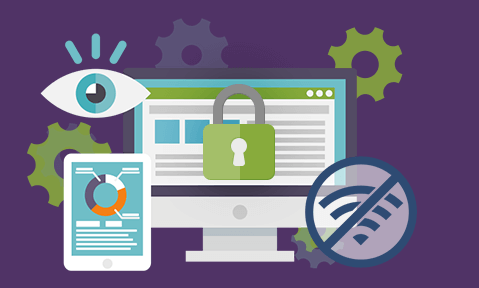Digital Rights Management (DRM) is the by-product of the U.S. Digital Millennium Copyright Act (DMCA) of 1998. The DMCA was passed in an effort to combat and punish the online piracy of copyrighted technology, devices, or services. DRM is a type of copyright protection that prevents the unauthorized duplication and redistribution of digital media. DRM controls also restrict how consumers can duplicate the digital content they have purchased.

Digital rights management software uses encryption to prevent copying, specify a timeframe during which authorized users can access content, or limit the number of devices digital media can be installed on. Nevertheless, despite the fact that digital content is protected by copyright laws, piracy and infringement are incredibly difficult to police and punish. That’s why it’s crucial to make life difficult for unauthorized users. When pirating content is difficult in the first place, it’s easier to catch and punish unauthorized users. This is where DRM technology comes in.
Contents
DRM 101

DRM software is designed to prevent the copying of digital media or limit the access time or the number of devices a product can be used on. Encryption is the best way for publishers, authors, and content creators to protect their works in the digital age. When DRM software is in place, only those with decryption keys have access to the content.
DRM allows copyright holders to restrict users from editing, saving, sharing, forwarding, or printing content. Copyright holders can set an expiration date for accessing content, as well as lock access to certain IP addresses, locations, or devices. Creators can also watermark visual content and valuable documents to establish copyright ownership and identity.
Companies use digital rights management software to retain control over how confidential documents are used, edited, copied, or printed. DRM software can protect sensitive emails from being forwarded, allow the entertainment industry to prevent the duplication of CDs and DVDs, and allow publishers to stop the copying or printing of ebooks.
CapLinked offers users a DRM technology that doesn’t rely on plugins to view PDFs and Microsoft Office files in-browser. It features comprehensive activity tracking and real-time analytics every time a file is accessed. This DRM solution gives clients the freedom to download files while business users can deny folder permissions at any time. CapLinked’s DRM software makes it easy to securely manage your copyrights so that you can prevent data leaks and collaborate with confidence.
The Benefits of DRM

Today’s digital world is full of vulnerabilities that make the unauthorized sharing of premium content easy. The use of DRM is a highly effective way to protect copyrighted digital content. Digital rights management is often the first introduction users receive about copyright enforcement and intellectual property. A digital rights management solution allows companies to educate users about the responsible use of digital content.
DRM can be frustrating for users who want unrestricted access to the digital content they purchase. The use of technology to prevent copyright infringement paves the way for better licensing agreements and anti-piracy technologies. Such measures help copyright holders retain ownership of their original works such as ebooks and audio files, and consequently, copy protection helps protect income streams.
Who uses DRM?

Digital content creators aren’t the only ones who benefit from a digital rights management software. Companies that use digital assets that are licensed or purchased from third-party creators also benefit from DRM technologies. DRM allows creators to prevent the unauthorized use of their digital content. Companies can control access to confidential information and sensitive documents. The healthcare and financial industries, for example, use digital asset management software to meet data security regulations. Copyright holders get the peace of mind that their digital content will remain unaltered and distributed in its original form by authorized vendors.
Digital rights management is an essential tool for copyright holders to protect their digital content from piracy and infringement.